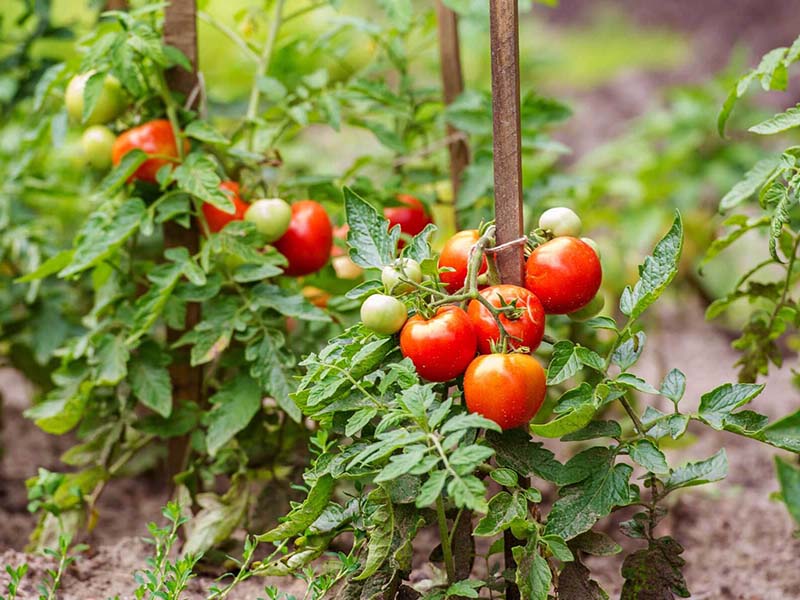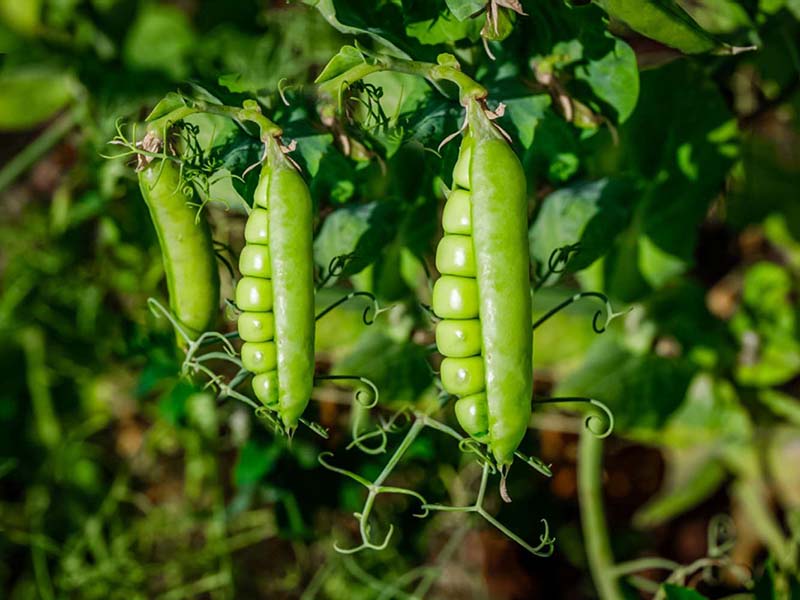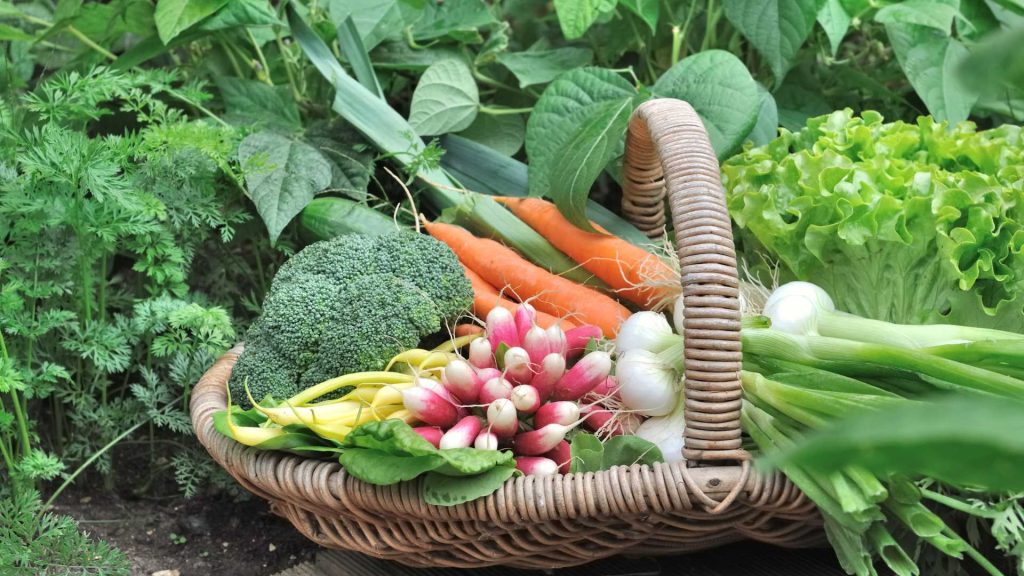We are surrounded by vegetables on a daily basis. For most of us they make up a large proportion of our food consumption and slowly they are becoming more and more popular amongst newbie gardeners looking to grow their own veg. Learning how to start a vegetable garden is easier than you may think and can even be tackled by novices. With these first-time gardening tips on how to start a vegetable garden from scratch, your ‘gardening for dummies’ books can take a back seat as you follow this simple guide to reaching your dreams of growing your own veg.
Planting a garden for the first time can seem like a terrifying ordeal. Even more so considering it will be your first time growing a vegetable garden. I remember my first vegetable garden experience, I was in awe at all the wondrous leafy greens, delicious carrots, and ripe tomatoes readily available all around me. I knew at that moment I had to try planting my first garden as soon as possible.
Finding the best vegetable garden tips for beginners was more difficult than anticipated, I was desperately searching ‘vegetable gardening for dummies’ hoping to find a guide suited to my serious lack of experience in the green-thumbed world. So I decided to put together my very own vegetable gardening 101 including all my first garden tips and others I have picked up along the way.
One of the most important things I realized at the beginning of my research into how to start a vegetable garden, was knowing the right veg to grow. Finding easy-to-grow vegetables for first-time gardeners was definitely the key to my success and so I’ve listed some of the best easy-to-grow veg out there to help you start your vegetable garden on a high.
5 Easy To Grow Vegetables For First Time Gardeners
Tomatoes

Tomatoes are an incredibly popular plant to grow in your garden, they prefer almost tropical warm conditions, but if planted in well-draining soil they can survive slightly harsher conditions. Many people grow tomatoes in greenhouses or at least start their tomato plants indoors in a location drenched in full sunlight.
Cabbage
Cabbages are a very versatile vegetable often used in salads, soups, or simply as one of your steamed veg. Cabbages take up a lot of room so bear that in mind when planting your vegetable garden. There are so many varieties of cabbage out there, each one more suited to a different time of year, so be sure to research your variety carefully to make sure you are planting it in the correct season.
Chard
Chard is reasonably good at adapting to slightly less sunlight than other vegetables. Sowing in April and in July should provide you with two crops to harvest each year. There is no need to harvest Chard once it has fully matured, you can eat the baby leaves!
Carrots
Carrots are an increasingly popular root vegetable for people learning how to start a vegetable garden from scratch as they are pretty hardy and can tolerate a range of conditions, although they do prefer plenty of sunlight!
Peas

Garden peas are a classic and there is nothing better than shelling them when it comes to harvest. Opt to grow mangetout for beginners.
Now you know the best vegetables to grow depending on your climate, growing conditions, it’s time to learn how to plant your first garden.
How To Plant A Vegetable Garden
Each vegetable prefers different conditions, that’s why it is important to really understand the veg you are planting. Providing each vegetable with the perfect location can be hard, especially if you’re looking to plant your vegetables close to one another in their own separate ‘garden’. Like most things that grow in the ground, vegetables love sunlight so finding a location that receives around 6 hours of sunlight each day is ideal.
Buying seeds to start your vegetable garden is the first step in this vegetable gardening for dummies guide. Plant each seed as per the instructions on the packet, but be careful not to plant too much too soon!
Over planting is the downfall of many first-time vegetable gardeners. No one wants to end up with a ridiculous amount of veg ready to harvest all in one go with no one to eat it all! So be sure to stagger your planting so you can reap your rewards over a longer period of time, or just plant less! It’s also imperative you have access to the middle of the bed easily without treading on newly planted veg, so plant in squares with tracks down the middle for easy access all round.
If you are planting tall plants such as tomatoes or sweet corn, then be sure to plant those towards the North side of your garden so they don’t cast a shadow over your other plants throughout the day. Some vegetables do appreciate cooler conditions so if the shade is unavoidable, be sure to plant cool-loving plants in that part of the garden.
Caring For Your Vegetable Garden
Once your vegetables are planted it is important to understand how to care for your vegetable garden. As each vegetable is different it is important to read the instructions on the packaging of your seeds to ensure you are providing the correct quantities of water to each plant. We suggest grouping plants with similar water needs together so as not to drown any.
All vegetable gardens will be susceptible to weeds. Oh, those pesky little blighters. Weeds are the novice gardeners’ nightmare. In fact, they even spark dread in the most proficient of growers. By knowing the correct way to remove weeds without damaging your crop can be the trick between a failed crop or a flourishing one. So pay attention to this 3-step-guide on de-weeding your vegetable garden.
Step 1. Loosen The Root
Using a gardening fork, push into the ground surrounding the base of the weed and wiggle gently to loosen the roots. Your weed should be edging up out of the ground.
Step 2. Remove
Grasp the big thick root with your hand and lift it out of the ground before disposing of it. (You may need to tug a bit to remove the entire root).
Step 3. Be On The Lookout
Weeds come in all shapes and sizes, so be on the lookout for anything growing where it shouldn’t be. The most common weeds found in the garden are dandelions and stinging nettles.
Conclusion
Most veg will need to be planted in the spring just after the last frost. These can then usually be harvested in late Summer/Fall when you will be able to enjoy all the fresh juicy produce grown by you in your own garden! Now doesn’t that sound fabulous?


